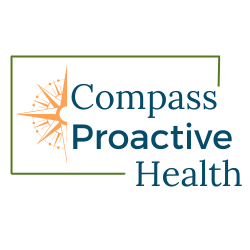The Physiology of Stress
If you’ve ever wondered what is actually happening within you body when you go through a stressful event, below is a pretty good breakdown of how that actually happens.
Irrespective of whether the stressor is perceived to be exciting or terrifying, the body is hardwired to respond with a physiological reaction comprised of a cascade of neural, hormonal, immune, and behavioral responses.
If a stressor is perceived a signal is sent to the hypothalamus. The hypothalamus communicates with the rest of the body through the Autonomic Nervous System (ANS). The ANS is comprised of two divisions: the sympathetic nervous system (SNS) and the parasympathetic nervous system (PNS). When a distress signal is received, the hypothalamus triggers the "flight or fight" response, activating the SNS and temporarily overriding the PNS.
The stress response consists of two sequences: The fast acting pathway is mediated by the the sympathetic -adrenal-medullary (SAM) pathway in which the SNS signals the adrenal medulla to secrete catecholamines, specifically epinephrine and norepinepherine. These are both hormones and neurotransmitters. When released from the adrenal glands they function and hormones that serve to prepare the body to act against the percieved threat. This is accomplished through various means such as vasodilation (i.e., muscles and blood vessels), and vasoconstriction of areas that are not needed to deal with the threat.
Following the initial activation, if the threat is still perceived the hypothalamus activates the hypothalamus-pituitary-adreanls axis (HPA)which is the slow acting pathway. This is used to mobilize the body's resources and then repair stress related damage. This series of hormonal signals begin with the hypothalamus release of corticotropin-releasing hormone (CRH). CRH then signals the pituitary gland to release adrenocorticotropic hormone (ACTH). This hormone travels down the adrenal cortex where it prompts the release of glucocorticoids.
Cortisol is necessary for several ongoing bodily functions. All humans produce a baseline that follows a circadian rhythm. Cortisol regulates glucose metabolism to to keep the muscles in a ready state. Cortisol also assist the SNS, enhancing the effect of catecholamines on the cardiovascular system. (Porth, 2014)
Healthy stress response are brief and self limiting. The hypothalamus and the pituitary gland inhibit the release of CRH and ACTH, respectively. These Negative Feedback Loops effectively turn off the stress response, suppressing cortisol secretion and preventing unnecessary extended elevations of hormones.
-The Professional’s Guide to Health and Wellness Coaching, pg. 150, 2019; American Council on Exercise

